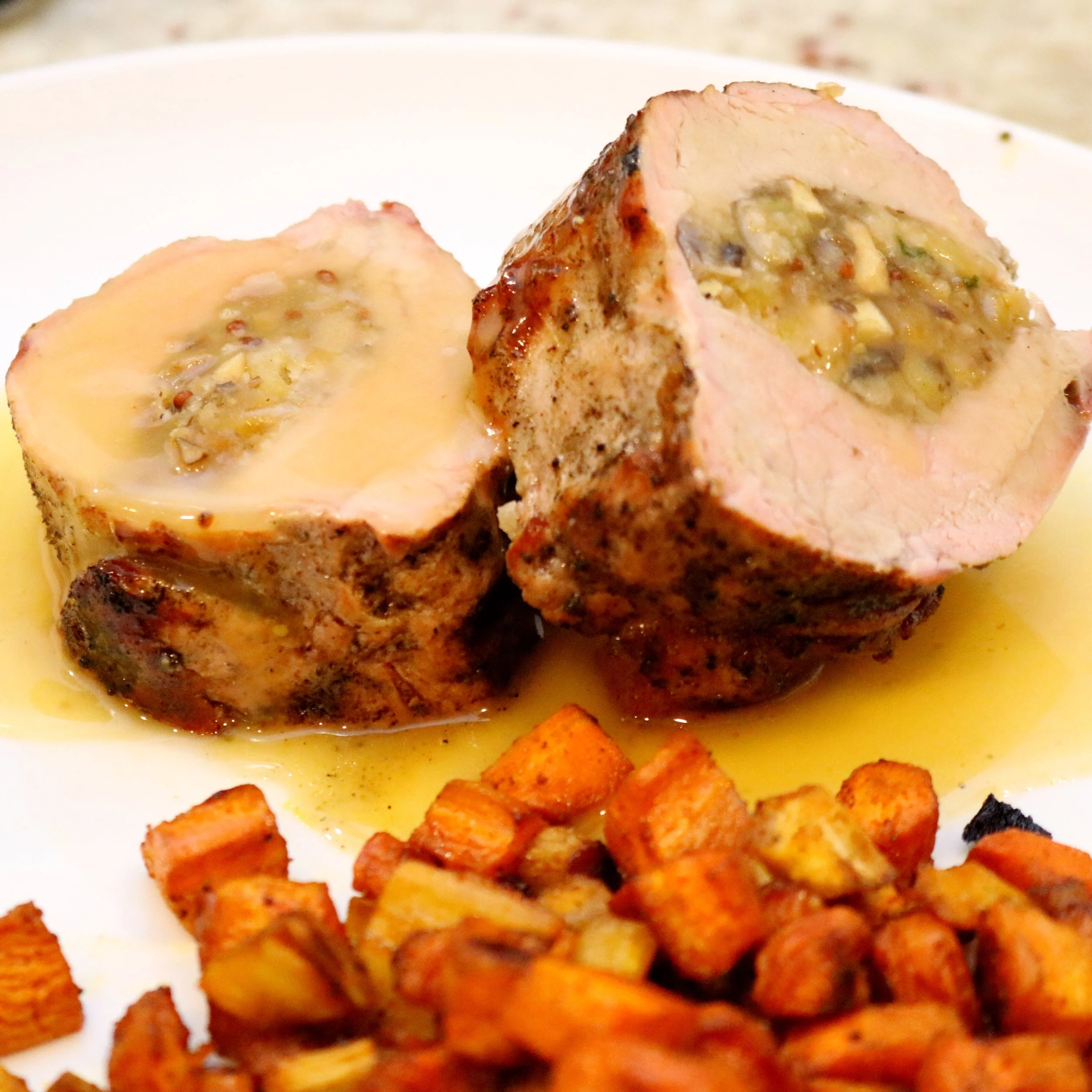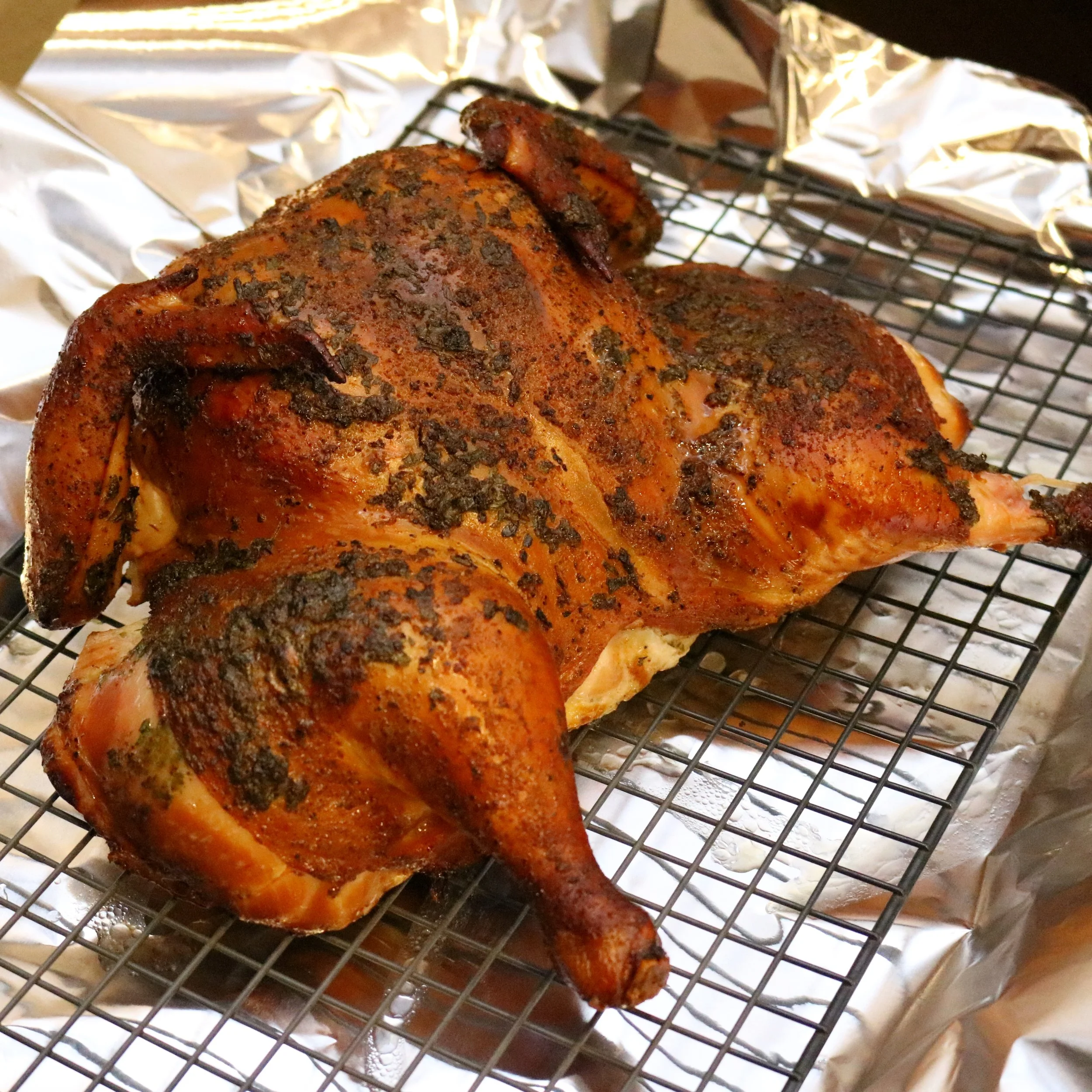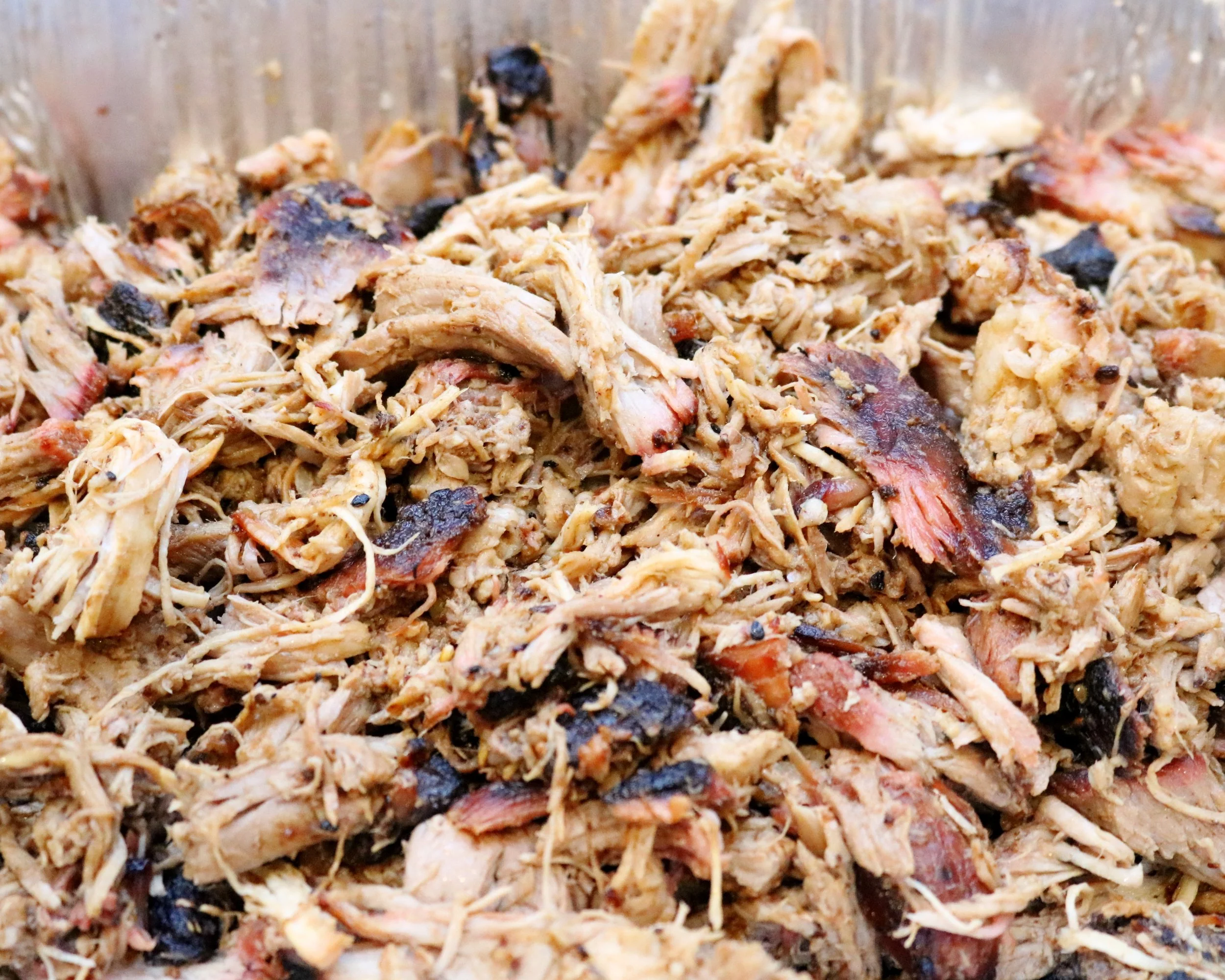Smoked Pulled Pork

This recipe requires an overnight brine and about 10 hours of cooking time. We strongly recommend cooking the pork the day before you plan to serve it, so that your guests aren't waiting around for the pork to finish cooking.
Yield: 20-25 4-oz. servings
Ingredients
For the Pork:
1 8-10 lb pork shoulder
1 cup kosher salt
1 cup brown sugar (dark or light)
Yellow mustard or Dijon mustard*
For the Rub:
1/2 cup Paprika-Ancho Rub
1/2 cup white sugar
Equipment
Smoker or charcoal grill
Disposable foil tray (large enough to accommodate the pork shoulder, about 9" x 13")
Baking sheet or large plastic cutting board
Large stock pot**
Probe thermometer
Aluminum foil (I prefer to use heavy duty foil)
Deep metal roasting pan or deep foil tray for finished pork (9" x 13" or larger)
Charcoal (if using charcoal-based smoker)
Hardwood chunks for smoker/grill (ideally, choose pecan, apple, or cherry - I personally find mesquite and hickory to be far too strong)
Shredding claws or two large serving forks
Instructions
The night before smoking:
In a large stock pot, dissolve 1 cup kosher salt and 1 cup brown sugar in about 2 cups of hot water. I usually just boil about 3 cups of water in my electric kettle, pour the water into a large stock pot and add the sugar and salt. Once the mixture is mostly dissolved, add about 3 cups of ice to the solution to cool it down. Let the ice fully melt and then add in 2 cups of cold water (the amount of ice and water isn't really critical here). Your brine should feel cool by this point, but if the brine still feels warm, pop your stock pot into the fridge for a bit or add some more ice. You don't want to add the pork to a warm brine.
Once the brine is ready or while its cooling, remove the pork from its packaging and determine if it needs trimming. Some butchers and grocery stores sell the pork shoulders already trimmed, so this step may not be necessary for everyone. The top of the pork shoulder should have a thick fat cap. While you can leave it as is, it's best if its trimmed to about 1/8" to 1/4" thick. If you notice any areas that are thicker than that, simply run your knife parallel to and along the top surface to shave off some of the excess fat. Make sure to move the knife in a direction away from you. It doesn't need to be perfect, just do the best you can with the time you have. If you choose to skip the trimming step, the end result will be fattier and won't have as nice of a bark on the top surface.
Once the pork is trimmed and the brine is cool, place the pork into the stock pot.** If needed, add cold water to the pot until the pork is fully immersed. Cover and place in fridge overnight.
If you haven't already made the paprika-ancho rub, combine all ingredients and set aside in an air-tight container.
In the morning (starting around 7 am, if possible):
Pork Prep:
Combine the paprika-ancho rub and white sugar. Prep your station by setting out the baking sheet or large plastic cutting board, the rub, and the mustard (I like to use a baking sheet since the vertical sides help keep rub from going all over the counter). Remove the pork from brine and place onto the baking sheet. Pat dry on all sides with paper towel and wipe up any excess brine from the bottom of the baking sheet. Turn the pork over so that the fat cap is facing down. At this point, I usually wash my hands and then dedicate one hand to the messy work while keeping the other clean. Squirt a bit of mustard onto the pork with one hand and spread it all over surface and down the sides with the other hand. You just want a very thin layer of mustard on the pork - it's only there to help the rub adhere. With your clean hand, generously sprinkle the rub over the pork. You want a nice, even coating of rub. With your messy hand, lightly press the rub into the pork. Check to make sure you've applied the mustard and rub on all sides that you have access to. Flip the pork over so the fat cap is facing up and repeat - first with the mustard and then the rub. If you have a bit of extra rub, just leave it to the side for now.
Smoker Prep:
Now that the pork is ready to go, let it hang out at room temperature while you start the charcoal for the smoker. You're aiming for a temperature of about 275°F on the smoker. When the charcoal is about ready to go, add the hardwood chucks to the top of the pile. Place the disposable foil tray on a lower rack of the smoker (if you have multiple racks, or on the base of the grill if you're using a charcoal grill set up for smoking/indirect heat). Fill the tray with about a half inch of water. Place the upper rack into the smoker and close the lid. Return to your pork. The rub should look wet by this point, as the sugar in it has dissolved into the mustard a bit. If you have any excess rub, sprinkle it over the top and any accessible sides. Place the pork into the smoker, fat side up, positioned over the foil tray. The foil tray isn't required, but it certainly helps with clean up and can add moisture to the inside of the smoker to aid in cooking.
Insert a thermometer probe into the center of the pork (slide the probe from the side, parallel to the bone and spaced about 2 inches from the bone). Make sure the probe is not in contact with the bone. Guide the probe wire out to the side of the smoker and close down the lid. You can go ahead and plug the probe into the temperature display unit, but I usually don't start actively monitoring the temp of the pork until about hour 4-5 (and even then, I usually only turn the unit on when I'm there to check the temp; just give it a minute or two to equilibrate when turning the unit on again).
Cook:
Smoke for about 9.5-10 hours, or until the internal temperature reaches about 200°F. I usually quickly check on the pork at about hour 5. Resist the urge to open the smoker and check on the pork too frequently. Expect to hit a temp stall around 160°F and sometimes again around 180°F - this is normal. If the pork is taking forever to move past these temps, don't be afraid to bump up the temp of the smoker to about 300°F. When the pork is ready, carefully lift it off the grate and into your deep roasting pan or foil tray (I typically use my shredding claws to easily lift the pork from the smoker). If any bits of pork or bark stick to grate, pull them off and add to the pan.
Rest & Shred:
Bring the pork inside, loosely cover with foil, and let rest at room temperature for 45 minutes to an hour. After resting, remove the bone from the pork (it should slide right out) and start shredding. You can use two large serving forks to do this, but it's so much easier and faster to use the shredding claws. Taste the pork and adjust the seasoning with salt if needed (it usually doesn't need it, but sometimes I'll mix in up to about 1/4 teaspoon of salt). Serve warm.
Storage:
If not serving right away, cover with foil tightly and stash in the fridge up to three days. To reheat before serving, place the covered tray in a 300°F oven for about an hour or until warm, stirring occasionally.
If you're making a large batch of pulled pork for future use, divide the pork into labeled, quart-size zip top bags (about one pound per bag), seal and lightly flatten. Stack bags in freezer. When you're ready to use the pork, thaw the bag overnight in fridge. If you're only using about a pound or two of the meat, I suggest reheating the pork on the stove. Add about a tablespoon of vegetable oil to a medium saucepan over medium-high heat and add in the pork. Break apart the meat with tongs as you stir. Cook until warmed through. If you're using a lot of the frozen meat, transfer it into a 9" x 13" pan, cover with foil, and heat in the oven as above.
Uses:
From a 10 lbs. pork shoulder, you can expect to yield about 6 lbs of cooked, shredded meat. A few options to consider for your mountain of meat are set out below.
Using all 6 lbs at once?
Serve about 24, 4-oz. pork sandwiches at a party.
Serve about 48, 2-oz. pork slider sandwiches at a party.
Set up a Nacho Party with smoked pulled pork topping, serving about 32 people (about 3 oz. per person).
If you're storing the pork in about 1 lb. bags in the freezer, a few other ideas:
Dedicate about 1.5 lbs. to a Pulled Pork Sandwich Dinner (4-6 servings).
Put 0.5 lb. towards a BBQ Pizza Night (4 servings).
Use 1 lb. in with a Pulled Pork Arepa Dinner (4 servings).
Set up a Nacho Party with 3 lbs of smoked pulled pork topping, serving about 10 people (about 3 oz. per person, likely to have a little leftover).
Bring 3 lbs of frozen smoked pulled pork, sealed in 1-lb. portions, to a neighbor or friend in need of some help with meals (think new baby, bereavement, illness, etc.). Casseroles are great, but pulled pork is far more versatile and can be thawed and reheated quickly. It's a great protein option for sandwiches, quesadillas, lettuce wraps, and tacos. Throw in some buns and BBQ sauce, or tortillas and cheese, and your friend or neighbor is well on their way to dinner in less than 20 minutes.
Notes
*You can also use vegetable oil if you don't have mustard on hand.
**If you don't have a large stock pot or don't have room in your fridge to store a large stock pot, you can also use a 2 gallon slider top bag for the brine step. I highly recommend double bagging the pork and putting the bag in a drawer of the fridge on its own, in case of any leaks. If using a bag, simply make the brine in a pot, bowl, or even a large measuring cup. Add the trimmed pork to the bag, and pour in the cooled brine. If needed, add cold water until the pork is fully immersed. Remove excess air and seal.





